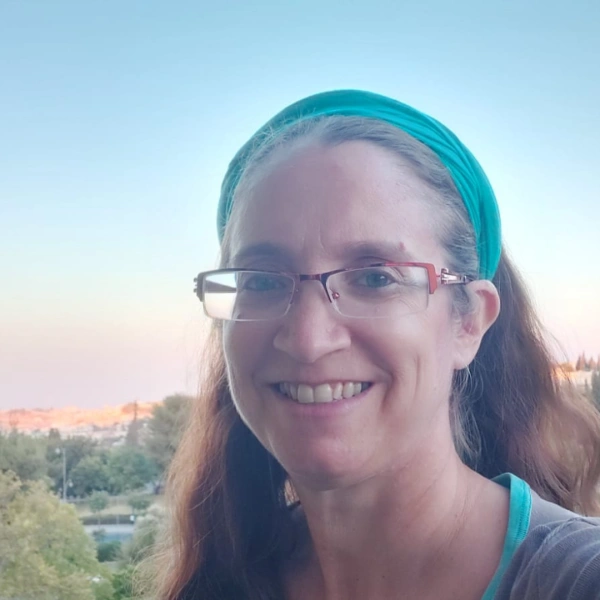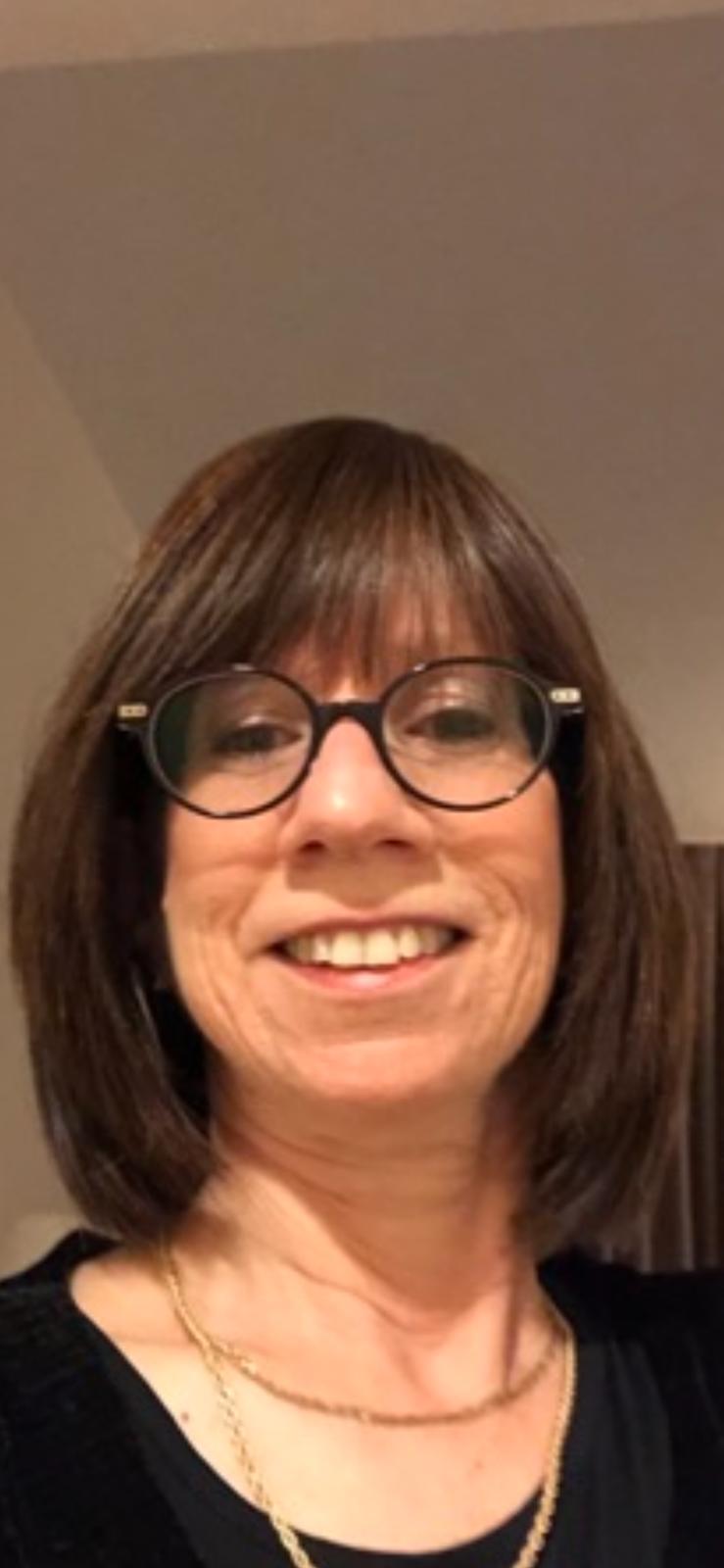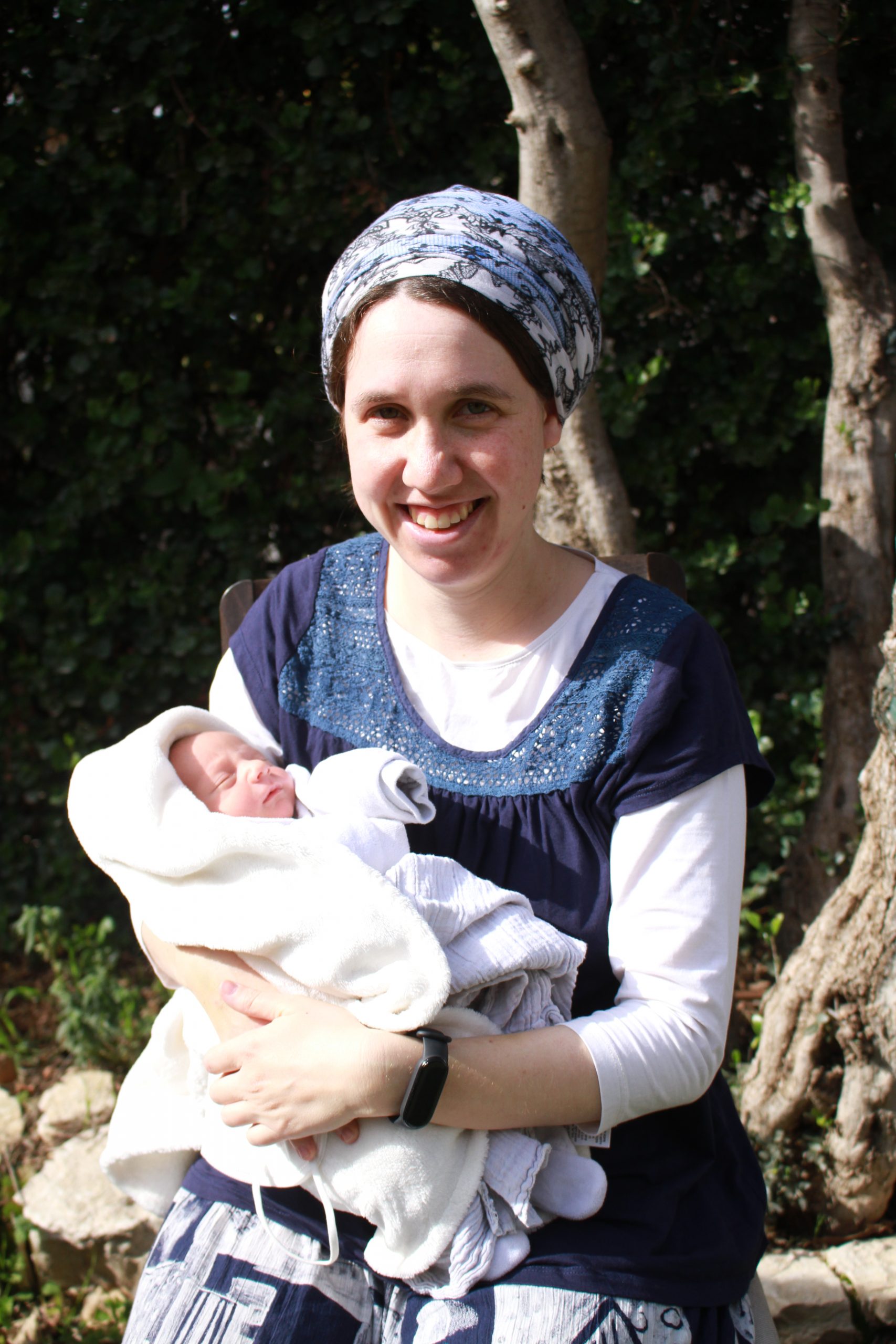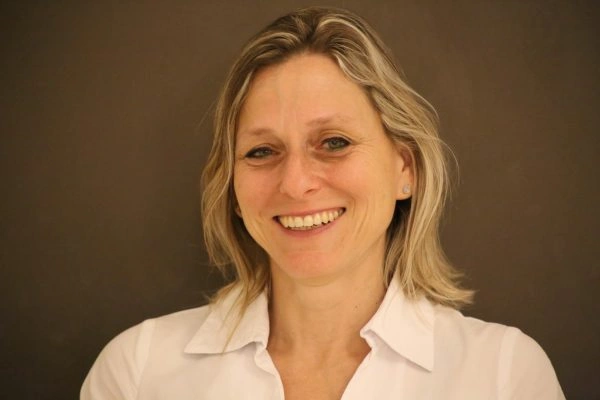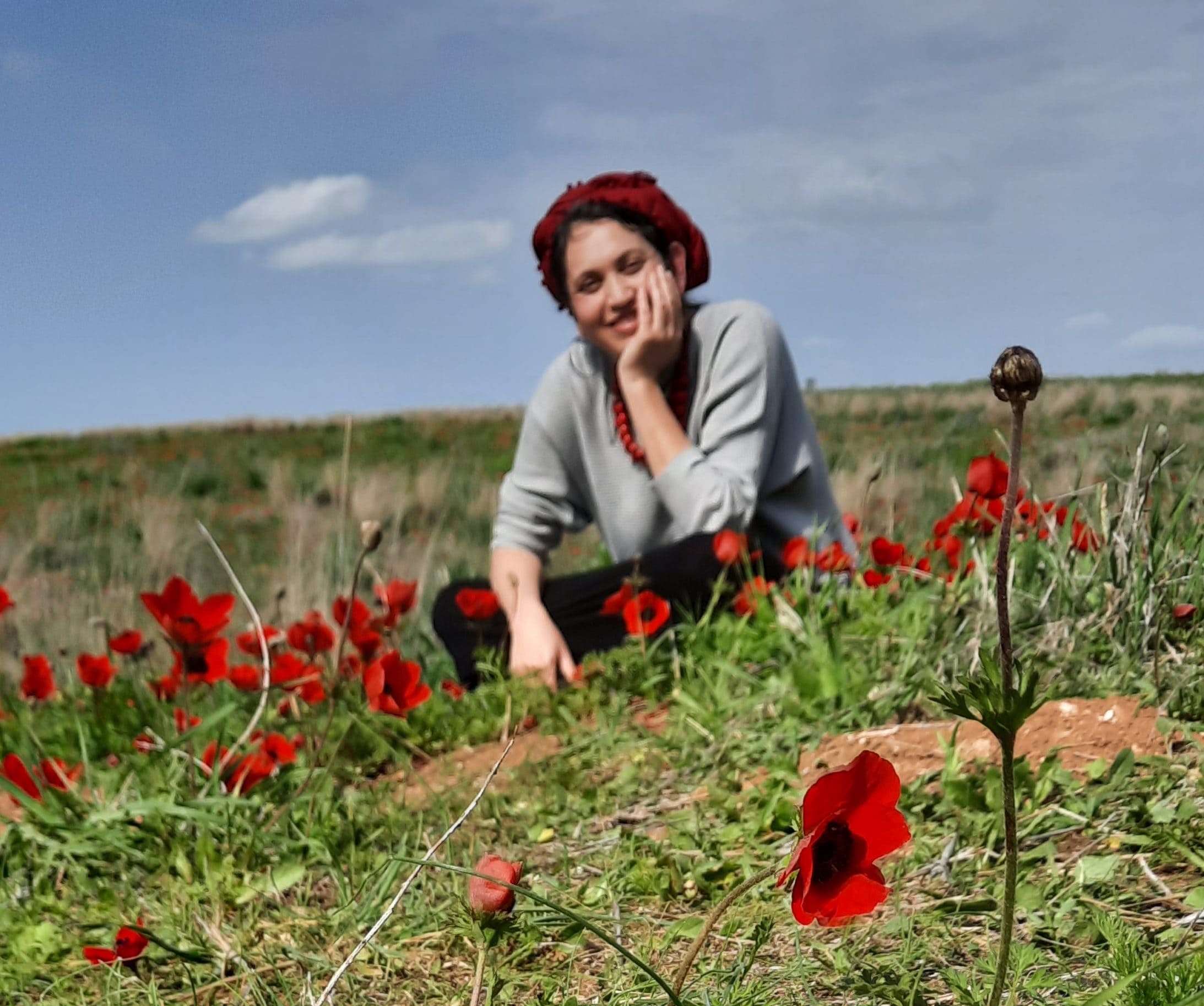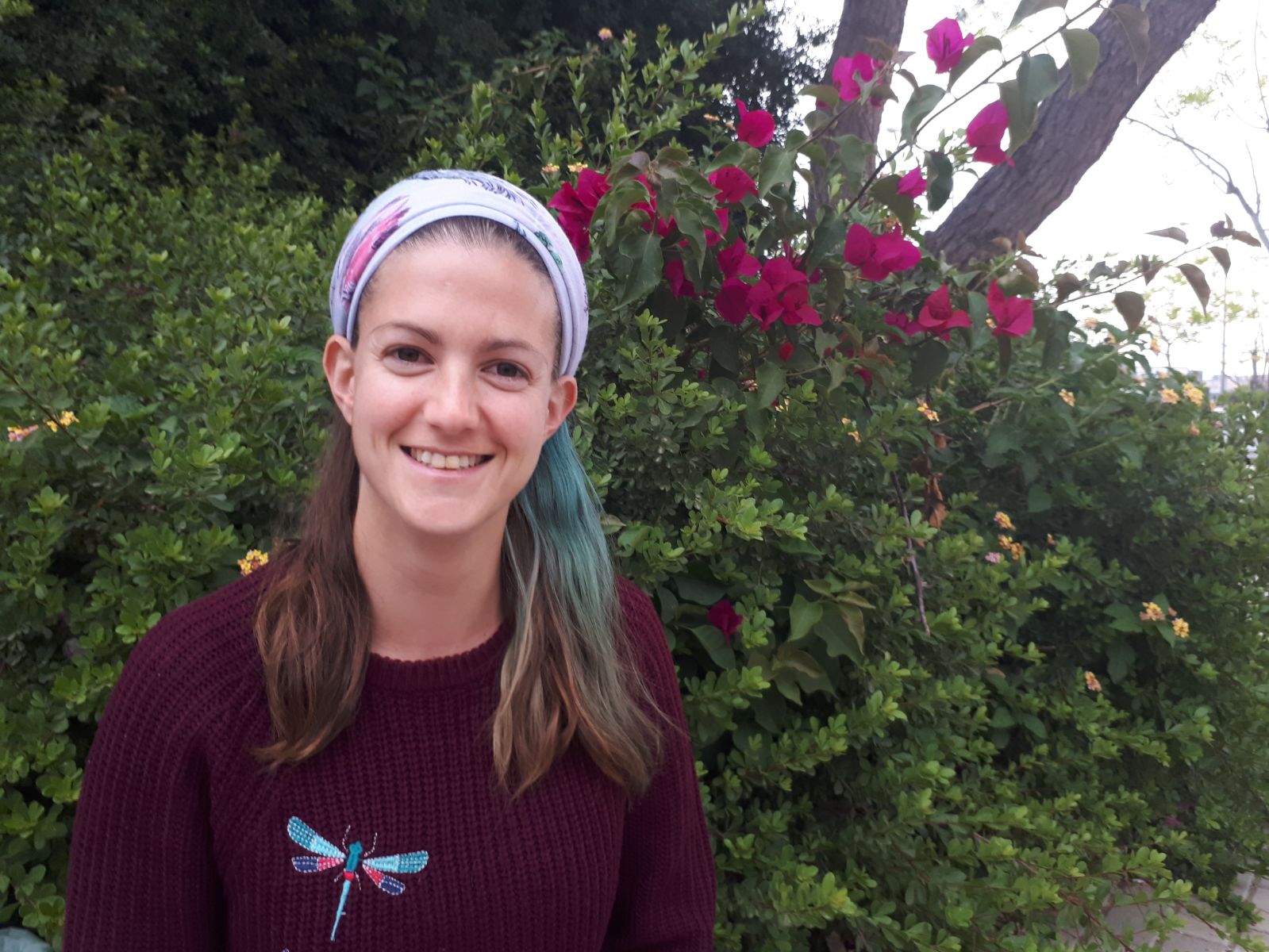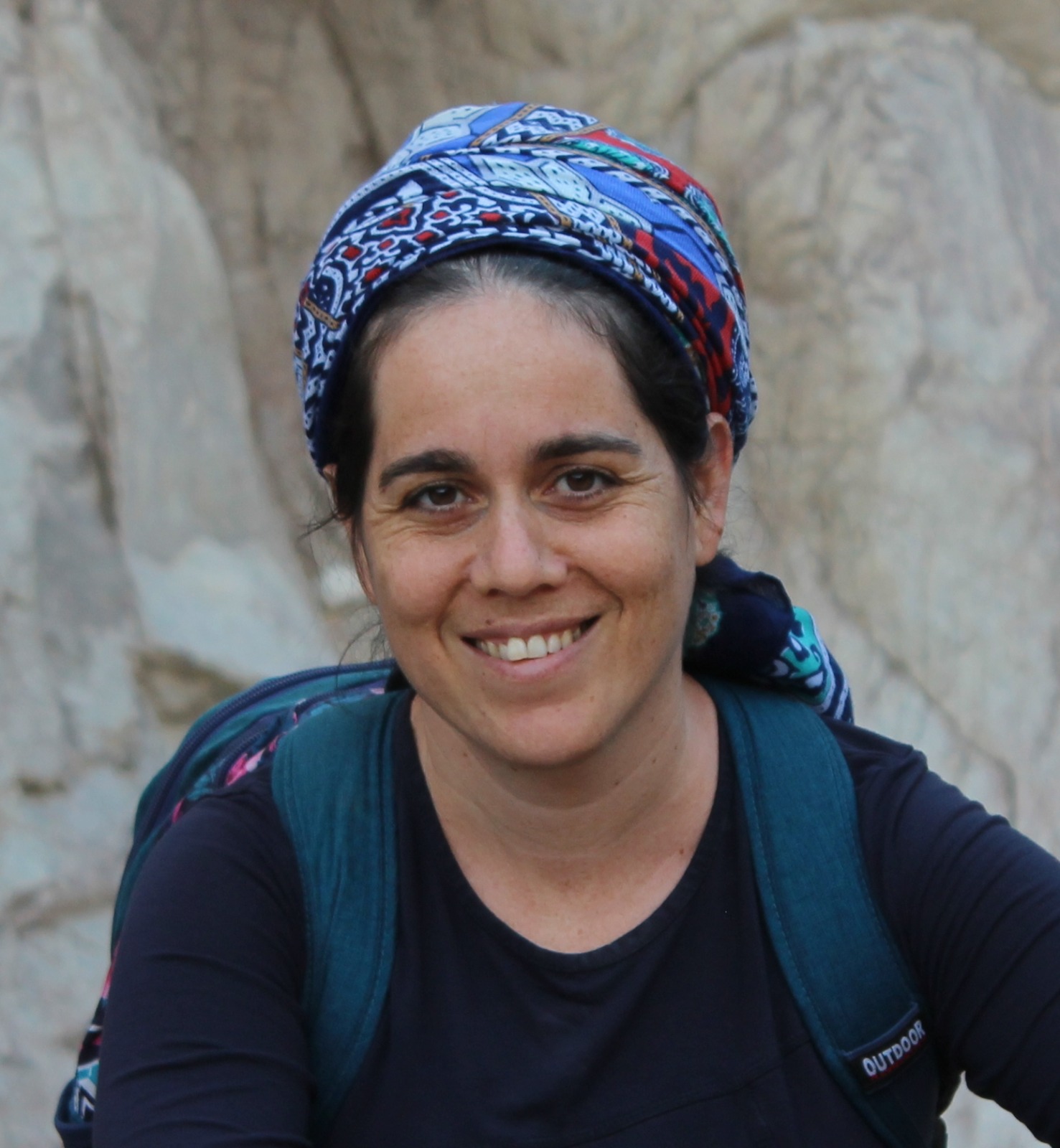דיני עצמות לעניין טומאת מת, מוקדשים ונבלה/שרץ. מה ההבדלים ביניהם? האם הטומאת מת במשנה רק לעניין מגע/משא ולא לעניין אהל?
לימוד השבוע מוקדש ע”י טינה לם לע”נ יצחק מאיר בן הרב צבי אריה ואסתר בתיה.
רוצים להקדיש למידה? התחל כאן:
לימוד השבוע מוקדש ע”י טינה לם לע”נ יצחק מאיר בן הרב צבי אריה ואסתר בתיה.
העמקה
רוצה להבין מה באמת קורה מתחת לפני השטח של הסוגיה?
שיעורים, פודקאסטים והרחבות של מיטב המורות שלנו יפתחו לך עוד זוויות וכיווני חשיבה.
חדשה בלימוד הגמרא?
זה הדף הראשון שלך? איזו התרגשות עצומה! יש לנו בדיוק את התכנים והכלים שיעזרו לך לעשות את הצעדים הראשונים ללמידה בקצב וברמה שלך, כך תוכלי להרגיש בנוח גם בתוך הסוגיות המורכבות ומאתגרות.
פסיפס הלומדות שלנו
גלי את קהילת הלומדות שלנו, מגוון נשים, רקעים וסיפורים. כולן חלק מתנועה ומסע מרגש ועוצמתי.
חולין קכה
וקולית המוקדשין הנוגע בהן בין סתומים בין נקובים טמא
and the thigh bone of a sacrificial animal that was rendered unfit as piggul, i.e., an offering that was sacrificed with the intent to consume it after its designated time, or notar, i.e., part of an offering left over after the time allotted for its consumption, whether these thigh bones were sealed and there was no access to the marrow, or whether they were perforated and there was access to the marrow, one who touches them is ritually impure. The reason is that a piece of bone of a corpse the size of a barley grain imparts impurity, and the bone of a sacrificial animal that was disqualified in this manner imparts impurity by rabbinic decree via contact.
קולית נבלה וקולית השרץ הנוגע בהם סתומים טהורים נקובים כל שהוא מטמא במגע מנין שאף במשא ת”ל (ויקרא יא, כז) הנוגע והנושא את שבא לכלל מגע בא לכלל משא לא בא לכלל מגע לא בא לכלל משא:
With regard to the thigh bone of an unslaughtered carcass and the thigh bone of a creeping animal, one who touches them when they are sealed remains ritually pure. If one of these thigh bones was perforated at all, it imparts impurity via contact, as in that case contact with the bone is tantamount to contact with the marrow. From where is it derived that even with regard to impurity transmitted via carrying there is a distinction between sealed and perforated thigh bones? It is derived from a verse, as the verse states: “One who touches the carcass thereof shall be impure until the evening; and one who carries the carcass thereof shall be impure until the evening” (Leviticus 11:39–40), indicating: That which enters the category of impurity via contact, enters the category of impurity via carrying; that which does not enter the category of impurity via contact, does not enter the category of impurity via carrying.
גמ׳ נוגע אין אבל מאהיל לא
GEMARA: The mishna teaches that one who touches the thigh bone of a human corpse is ritually impure, whether or not it was sealed. The Gemara infers that with regard to one who touches the bone, yes, he is impure, but one who overlies the thigh bone is not impure, as it does not transmit impurity to that which is above it or under the same roof.
היכי דמי אי דאיכא כזית בשר באהל נמי ליטמא דליכא כזית בשר
The Gemara asks: What are the circumstances? If there is an olive-bulk of flesh attached to the bone then it should transmit impurity in a tent, i.e., to that which is under the same roof, as well. The Gemara answers: The mishna is discussing a case where there is not an olive-bulk of flesh attached to the bone.
ואי דאיכא כזית מוח מבפנים טומאה בוקעת ועולה באהל נמי ליטמא דליכא כזית מוח בפנים
The Gemara objects: But if there is an olive-bulk of marrow inside the bone, the impurity breaks through the bone, so to speak, and ascends beyond it. Therefore, it should transmit impurity in a tent as well. The Gemara explains: The mishna is discussing a case where there is not an olive-bulk of marrow inside the bone.
ואי מוח מבפנים מעלה ארוכה מבחוץ אבר מעליא היא באהל נמי ליטמא אמר רב יהודה בריה דרבי חייא זאת אומרת מוח בפנים אינו מעלה ארוכה מבחוץ
The Gemara objects: But if the mishna maintains that marrow inside the bone of a living person heals the flesh outside the bone, then since the marrow could replenish itself and catalyze the growth of flesh on the bone it is a proper limb. Therefore, as is the case with any piece of a proper limb, even one less than the size of an olive-bulk, it should transmit impurity in a tent as well. Rav Yehuda, son of Rabbi Ḥiyya, says: That is to say that the mishna maintains that marrow inside the bone does not heal the flesh outside the bone.
במאי אוקימתא דליכא כזית אי הכי במוקדשים אמאי מטמא
The Gemara asks: To what case did you interpret the mishna to be referring? It is a case where there is not an olive-bulk of marrow. If so, in the case of a sacrificial animal, why does the thigh bone impart impurity? The Sages issued a decree that the bones of a sacrificial animal that are attached to flesh or contain marrow that became piggul or notar render those who touch them impure, as they serve as handles or protection for the flesh or marrow. By contrast, in this case there can be no piggul or notar because there is less than an olive-bulk of flesh or marrow.
ותו קולית נבלה וקולית השרץ כי ניקבו אמאי מטמאו
And furthermore, if the mishna is discussing a case where there is not an olive-bulk of marrow, why do the thigh bone of an unslaughtered carcass and the thigh bone of a creeping animal impart impurity in a case when they were perforated?
הא לא קשיא רישא דליכא כזית סיפא דאיכא כזית ומאי קמ”ל מילי מילי קא משמע לן
The Gemara answers: That is not difficult. The first clause of the mishna, which discusses the thigh bone of a corpse, is referring to a case where there is not an olive-bulk of marrow. The latter clause of the mishna, which discusses the thigh bones of a sacrificial animal, an unslaughtered carcass, and a creeping animal, is referring to a case where there is an olive-bulk of marrow. And accordingly, what is the tanna of the mishna teaching us? He is teaching us several distinct matters separately, as follows.
רישא קמ”ל דמוח מבפנים אינו מעלה ארוכה מבחוץ מוקדשין מאי קמ”ל שימוש נותר מילתא היא דאמר מרי בר אבוה אמר רבי יצחק עצמות קדשים ששימשו נותר מטמאין את הידים הואיל ונעשה בסיס לדבר האסור
In the first clause he is teaching us that the marrow inside the bone does not heal the flesh outside the bone. With regard to the thigh bone of sacrificial animals, what is he teaching us? He is teaching us that a bone that serves as a handle or protection for flesh or marrow that became notar is significant and imparts impurity, as Mari bar Avuh said that Rabbi Yitzḥak said: Bones of sacrificial animals that served as a handle for notar, meaning that they have leftover meat on them or inside them after the allotted time for its consumption, transmit impurity to the hands of those who handle them, just as the leftover sacrificial meat itself transmits impurity to the hands. Since the bones have become a base for an intrinsically forbidden object, they are treated in the same manner as the forbidden object itself.
נבלה אע”ג דאיכא כזית ניקבה אין לא ניקבה לא
Next, the tanna of the mishna teaches that with regard to the thigh bone of an unslaughtered carcass, even if there is an olive-bulk of marrow inside, if it was perforated it does impart impurity, but if it was not perforated, it does not impart impurity.
אביי אמר לעולם מוח מבפנים מעלה ארוכה מבחוץ והכא במאי עסקינן בששפה
Abaye said: Actually, the tanna of the mishna maintains that marrow inside the bone heals the flesh outside the bone. And with regard to the consequent assertion: If so, the thigh bone should impart impurity in a tent as well, the explanation is that here we are dealing with a case where one scraped the bone. Therefore, the flesh and the marrow can no longer heal, and the bone is not considered a proper limb that imparts impurity in a tent.
וכדרבי אלעזר דא”ר אלעזר קולית ששפה לארכה טמאה לרחבה טהורה וסימניך דיקלא
And this mishna is in accordance with the opinion of Rabbi Elazar, as Rabbi Elazar said: A thigh bone that one scraped lengthwise is impure like a limb. Even if it is not attached to flesh or marrow, a bone scraped in such a manner still has the ability to heal. But if one scraped it widthwise it will not heal and is therefore pure. And your mnemonic to remember which can heal and which cannot is a palm tree, because if one sawed a strip off of a palm tree lengthwise it can heal, but if one did so widthwise, i.e., one sawed a strip off of the circumference of the tree, the flow of sap is disrupted and the tree cannot heal.
ורבי יוחנן אמר לעולם דאיכא כזית ומוח מבפנים מעלה ארוכה מבחוץ ומאי נוגע דקתני מאהיל
And Rabbi Yoḥanan said: Actually, the mishna is discussing a case where there is an olive-bulk of marrow in the bone. And the tanna of the mishna also holds that marrow inside the bone heals the flesh outside the bone. And as for the consequent assertion: If so, the bone should transmit impurity in a tent, in fact the bone does impart impurity in a tent. And to what is the mishna referring when it teaches that one who touches the bone is ritually impure? It is also referring to one who overlies the bone.
ואי מוח מבפנים מעלה ארוכה מבחוץ קולית נבלה וקולית השרץ כי לא נקבו אמאי טהורים
The Gemara asks: But if the marrow inside the bone heals the flesh outside the bone, why does the mishna teach that the thigh bone of a carcass and the thigh bone of a creeping animal are pure when they were not perforated?
אמר רבי בנימין בר גידל אמר ר’ יוחנן הכא במאי עסקינן כגון דאיכא כזית מוח המתקשקש גבי מת טומאה בוקעת ועולה נבלה כיון דמתקשקש הוא ניקבה אין לא ניקבה לא
Rabbi Binyamin bar Giddel said that Rabbi Yoḥanan said: Here we are dealing with a case where there is an olive-bulk of marrow that has become detached and is rattling inside the bone. With regard to impurity imparted by a corpse, the impurity breaks through the bone and ascends, and it therefore transmits impurity in a tent. But with regard to the impurity of a carcass, since the marrow is loose and rattling, it will not heal. Therefore, if the bone was perforated and it is possible to touch the marrow, the bone does impart impurity. But if the bone was not perforated it does not impart impurity.
א”ר אבין ואיתימא ר’ יוסי בר אבין אף אנן נמי תנינא הנוגע בכחצי זית ומאהיל על חצי זית או חצי זית מאהיל עליו טמא
According to Rabbi Yoḥanan, overlying is referred to as touching in the mishna. Rabbi Avin said, and some say it was Rabbi Yosei bar Avin who said: We learn in a mishna as well (Oholot 3:1): In the case of one who touches with one hand half an olive-bulk of a corpse and simultaneously his other hand overlies half an olive-bulk or half an olive-bulk of flesh from a corpse overlies him, he is impure.
אי אמרת בשלמא חד שמא הוא משו”ה מצטרף
Granted, if you say that impurity via contact and impurity transmitted in a tent or to one overlying a part of the corpse are one concept, it is due to that reason that the half olive-bulk of impurity that he touched and the half olive-bulk of impurity that he overlaid join together to constitute the requisite measure of an olive-bulk.
אלא אי אמרת תרי שמי נינהו מי מצטרף והתנן זה הכלל כל שהוא משם אחד מצטרף וטמא משני שמות טהור
But if you say that they are two concepts, how can they join together? But didn’t we learn in that mishna (Oholot 3:1): This is the principle: Any impure items lacking the requisite volume to have impure status on their own that are of one concept join together and are impure; if they are of two concepts, they do not join together and remain pure?Apparently, touching and overlying a corpse create the same type of impurity, and therefore overlying is referred to as touching in the mishna here.
אלא מאי חד שמא הוא אימא סיפא אבל
The Gemara challenges: Rather, what is the alternative? Is it one concept that comprises both touching and overlying? Say the latter clause of the mishna in tractate Oholot: But
הנוגע בכחצי זית ודבר אחר מאהיל עליו ועל כחצי זית טהור
in the case of one who touches half an olive-bulk of flesh from a corpse and simultaneously another item overlies both him and half an olive-bulk of flesh from a corpse, he remains pure.
ואי חד שמא הוא אמאי טהור אלא קשיא רישא
But if impurity via contact and via a tent are considered one concept, why does he remain pure? Rather, based on the latter clause of the mishna, the first clause of the mishna is difficult, because it indicates that these two categories of impurity are considered one concept and join together to constitute the requisite measure for impurity.
אמר רבי זירא בטומאה רצוצה בין ב’ מגדלים עסקינן ואין ביניהן פותח טפח דכולה נגיעה היא
Rabbi Zeira said: In the first clause of the mishna we are dealing with a case where the source of impurity is pressed between two wooden chests and there is no opening of one handbreadth in between the chests. When the hand of a person overlies the chests, the impurity of the pressed item rises beyond the chests and it transmits impurity to the person. Therefore, his interaction with all the sources of impurity is considered as though he is touching them simultaneously. Consequently, there is no proof in the mishna for the opinion of Rabbi Yoḥanan that imparting impurity via contact and via a tent are considered the same concept.
ומאן תנא דקרי לאהל נוגע ר’ יוסי היא דתניא ר’ יוסי אומר מלא תרווד רקב מטמא במגע ובמשא ובאהל
Therefore, the Gemara asks: Who is the tanna who refers to impurity imparted in a tent as one who touches [noge’a]? The Gemara answers: It is Rabbi Yosei, as it is taught in a baraita (Tosefta, Oholot 4:1): Rabbi Yosei says: A full ladle [tarvad] of dust from a corpse imparts impurity like the corpse itself in three ways: By contact [bemagga], and by carrying, and in a tent.
בשלמא במשא ובאהל הא קא טעין ליה לכוליה והא קא מאהיל אכוליה אלא נוגע הא לא נגע בכוליה אלא לאו ש”מ מאי נוגע מאהיל
Granted, the dust of a corpse imparts impurity via carrying and in a tent; this one who carries it carries the entire amount of dust and that one who overlies the dust overlies all of it. But with regard to one who touches it, one does not touch all of the dust, and it should therefore be impossible for one to become impure via contact. Rather, isn’t it correct to conclude from this baraita: To what is the term noge’a referring? It is referring to one who overlies the dust.
והא קתני נוגע והא קתני מאהיל אמר אביי למטה מטפח אהל נגיעה למעלה מטפח אהל גרידא
The Gemara asks: How is it possible to explain the baraita in such a manner? But doesn’t Rabbi Yosei teach the case of one who touches separately, and doesn’t he teach the case of one who overlies separately? Therefore, the term noge’a cannot be referring to overlying. Abaye said: That is not difficult because there are two types of overlying. With regard to a tent that overlies impurity at a height of below one handbreadth, that tent is referred to as touching. But a tent that overlies impurity at a height of above one handbreadth is referred to as merely a tent.
רבא אמר אפילו למעלה מטפח נמי אהל נגיעה הוא והיכי דמי אהל גרידא בהמשכה
Rava said: According to Rabbi Yosei, even a tent that overlies impurity at a height above one handbreadth is referred to as touching. And what are the circumstances of a tent that is referred to as merely a tent and not as touching? The term tent is referring to the case of a structure that overlies both a person and a source of impurity, thereby spreading the impurity from its source to the person.
אמר רבא מנא אמינא לה דתנן ר’ יוסי אומר חבילי מטה וסריגי חלונות חוצצין בין הבית לעלייה שלא להכניס טומאה לצד שני
Rava said: From where do I say my opinion? It is as we learned in a baraita (Tosefta, Oholot 9:4) that Rabbi Yosei says: With regard to bundles that serve as a bed and grilles taken from windows, if one placed them between the ground floor and the upper floor of the house such that they serve as a ceiling, since they have become part of the building they are not susceptible to impurity. Therefore, even if there are holes in the bundles and the grilles, they serve as a barrier between the house and the upper floor such that the impurity of a corpse present in the area of the house cannot enter the other side, i.e., the upper floor.
פרסן על פני המת באויר הנוגע כנגד הנקב טמא שלא כנגד הנקב טהור
And if one spread out the bundles and grilles outside the house in an impermanent manner by hanging them over a corpse in the air like a net, one who touches, i.e., overlies the corpse, opposite a hole in the netting becomes impure. By contrast, one who overlies it not opposite a hole remains pure.
ה”ד אילימא למטה מטפח שלא כנגד הנקב אמאי טהור מת בכסותו הוא ומת בכסותו מטמא
Rava explains his proof: What are the circumstances? If we say that he spread out the netting below the height of one handbreadth above the corpse, why does one who overlies the corpse not opposite a hole in the netting remain pure? In such a case, the netting is close enough to the corpse to be considered part of the clothing of the corpse. Therefore, the case is tantamount to one where the corpse is dressed in its clothing, and a corpse dressed in its clothing imparts impurity to one who overlies it because the clothing does not act as a barrier.
אלא לאו למעלה מטפח וקא קרי ליה נוגע
Rather, is it not the case that he spread out the netting more than one handbreadth above the corpse? And Rabbi Yosei refers to overlying the corpse as touching. Apparently, contrary to the opinion of Abaye, Rabbi Yosei refers to overlying as touching even when the overlying item is more than one handbreadth above the source of impurity.
אמר אביי לעולם למטה מטפח ודקאמרת מת בכסותו הוא מת בכסותו מבטל ליה האי לא מבטל ליה
Abaye rejected Rava’s proof and said: Actually, the case is one where one spread the netting out below the height of one handbreadth above the corpse. And with regard to that which you say: If so, one who overlies the corpse not opposite a hole in the netting should also become impure as it is tantamount to a case of a corpse dressed in its clothing, this case is not similar to the case of a corpse dressed in its clothing. In the case of a corpse dressed in its clothing the clothing does not act as a barrier to the impurity because the one who dressed the corpse nullified the clothing by rendering its status as though it is a part of the corpse. But in this case in the baraita, the one who spread out the netting over the corpse intended to remove the bundles and grilles afterward and he did not nullify them.
ותהוי כטומאה טמונה בוקעת ועולה קסבר רבי יוסי טומאה טמונה אינה בוקעת
The Gemara objects with regard to Abaye’s explanation: But if the case is one where he spread out the netting less than one handbreadth above the corpse, even if it is not considered the clothing of the corpse, let it be considered like a source of impurity hidden underneath an overlying structure at a distance of less than one handbreadth. In such a case, the impurity breaks through and ascends, and therefore it should transmit impurity even to one who overlies it not opposite a hole in the netting. The Gemara explains: Rabbi Yosei holds that hidden impurity does not break through and ascend.
ומנא תימרא דתנן תיבת המגדל שיש בה פותח טפח ואין ביציאתה פותח טפח טומאה בתוכה הבית טמא טומאה בבית מה שבתוכה טהור
And from where do you say that this is the opinion of Rabbi Yosei? It is as we learned in a mishna (Oholot 4:2): In the case of a compartment in a chest that is inside a house, in which the open space of the compartment itself has at least one cubic handbreadth in volume, but the opening of the compartment to the house does not have the area of one square handbreadth, and the volume of the entire chest is forty se’a, in that case, if there is a source of impurity inside the compartment, the compartment does not act as a barrier and the house is impure. If the source of impurity is inside the house but outside the chest, whatever is inside the compartment remains pure, because the opening of the compartment is less than one handbreadth.
מפני שדרך טומאה לצאת ואין דרך טומאה ליכנס
This differentiation exists because it is typical for a source of impurity to exit from its location, and therefore impurity can be transmitted out of the compartment and into the house. But it is not typical for a source of impurity to enter a location, and therefore an impure item that lies in the house does not transmit impurity into the compartment. Since the volume of the chest is forty se’a it constitutes a separate tent, and the compartment that is part of the chest is also considered part of this tent.
ורבי יוסי מטהר מפני שיכול הוא להוציאה לחצאין או לשורפה במקומה
And Rabbi Yosei deems the house pure when the impure item is in the compartment. The item will not necessarily impart impurity outside of the compartment because one can remove the source of impurity from the compartment in halves, i.e., in pieces that each measure less than the requisite amount to impart impurity. Or, alternatively, one can burn the source of impurity while it still remains in its place inside the compartment.
וקתני סיפא העמידה בפתח ופתחה לחוץ טומאה בתוכה הבית טהור טומאה בבית מה שבתוכה טהור
And the latter clause of that mishna teaches: If one placed the chest in the entrance to the house and the opening of the compartment is facing out of the house, if there is a source of impurity inside the chest, the house remains pure because the impure item will typically exit the house. If there is a source of impurity in the house, whatever is inside the chest remains pure, because the source of impurity will not enter the chest.























